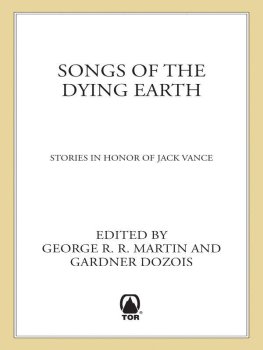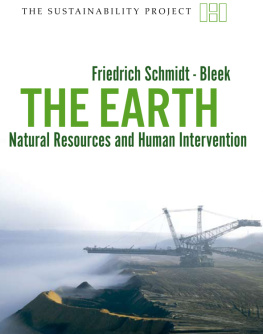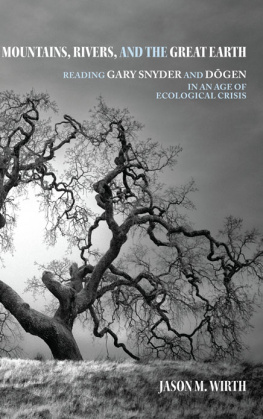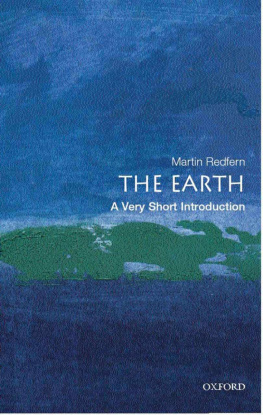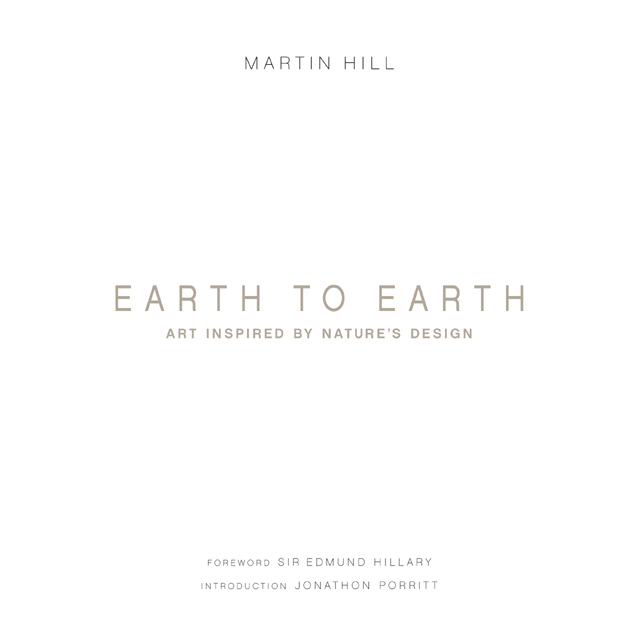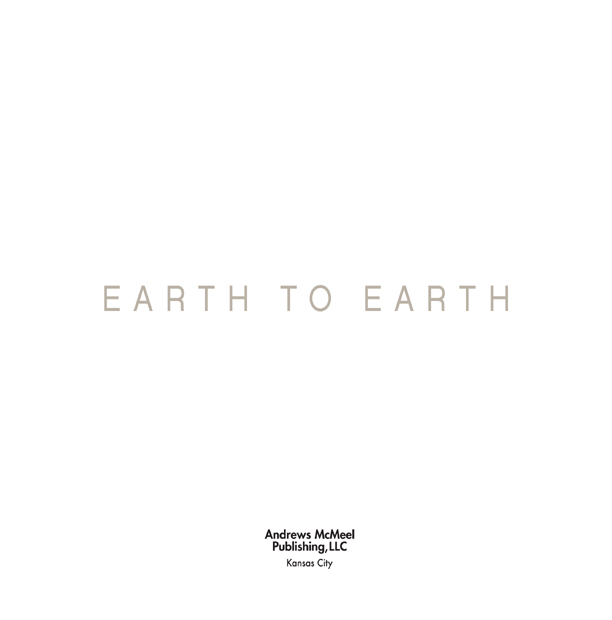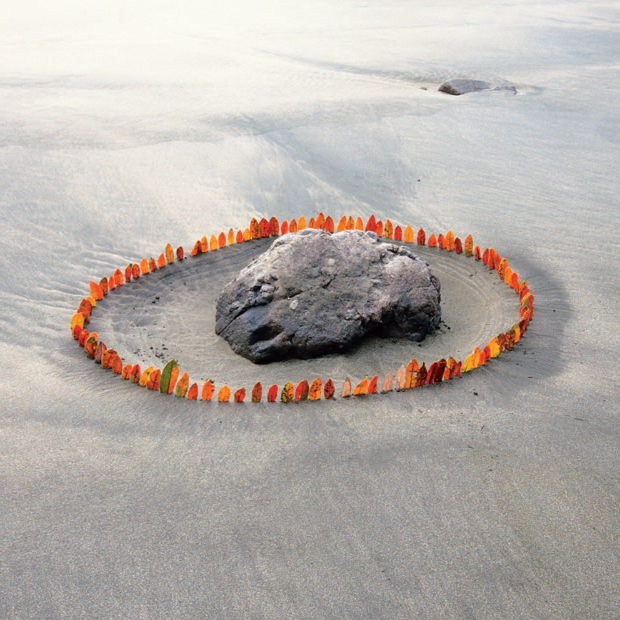EARTH TO EARTH Copyright 2007 by Martin Hill.
This edition published by Andrews McMeel Publishing, LLC, an Andrews Mc Meel Universal company, 1130 Walnut Street, Kansas City, Missouri 64106. All rights reserved. No part of this publication may be reproduced or transmitted in any form or by any means, electronic or mechanical, including photocopying, recording, or any information storage and retrieval systems, without permission in writing from the publisher.
E-ISBN: 978-1-4494-0633-2
Library of Congress Control Number: 2007922166
www.andrewsmcmeel.com
Produced and originated by PQ Blackwell Limited
116 Symonds Street, Auckland, New Zealand
www.pqblackwell.com
The publisher is grateful for literary permissions to reproduce those items below subject to copyright. Every effort has been made to trace the copyright holders and the publisher apologizes for any unintentional omission. We would be pleased to hear from any not acknowledged here and undertake to make all reasonable efforts to include the appropriate acknowledgment in any subsequent editions.
Excerpts from Lost Woods: The Discovered Writing of Rachel Carson, Copyright 1998 by Roger Allen Christie and The Sea Around Us by Rachel Carson, Copyright 1950 by Rachel L. Carson used with permission from Frances Collin, Trustee. Excerpt from Biomimicry by Janine M. Benyus, Copyright 1997 by Janine M. Benyus, reprinted by permission of HarperCollins Publishers. Excerpt from A Study of History by Toynbee, Arnold J. (1987), by permission of Oxford University Press Inc. Excerpt from Wabi-Sabi: for Artists, Designers, Poets & Philosophers by Leonard Koren, Copyright 1994 by Leonard Koren, Stone Bridge Press, reprinted by permission of the author. Excerpt from This Is the American Earth by Nancy Newhall with Ansel Adams, Little, Brown and Company, reprinted by permission. Extract from Aphorisms for Leo Baeck (1952) by Albert Einstein, Albert Einstein Archives. Extract from Ends and Means (1937) by Aldous Huxley, reprinted by permission.
This book is printed on sustainably produced paper, using mineral free inks, and the jacket is finished with an aqueous seal.
All rights reserved. No part of this publication may be reproduced or transmitted in any form or by any means, electronic or mechanical, including photocopying, recording, or any information storage and retrieval systems, without permission in writing from the publisher.
Design concept by Cameron Gibb
Additional design by Victoria Skinner
I WORK IN NATURE
BECAUSE WE ARE NATURE .
FOREWORD
Martin Hill has climbed in many parts of the world and, like myself and most other climbers, has witnessed the many changes that have occurred in the wilderness and nature.
No one who has any feeling for the beauty of nature or any concern for humankind could be unmoved by the problems faced by our natural environment. Change for the better is inevitably slow, but change and improvement we are certainly seeing.
An increasingly large number of people around the world are using their skills to bring the environments problems to the worlds attention. Thankfully, a sense of environmental responsibility is gradually being adopted by an ever wider audience.
Martin Hill creates and publishes environmental artworks that reveal his love for the earths environment and his desire to protect it. Recognizing current lifestyles are unsustainable, he works to inspire sustainable ethical design to bring us into balance with the natural world upon which we rely.
The world is still very beautiful; every effort must be made to preserve it. I admire Martins unique way of showing us the beauty of nature, not only visually, but metaphorically, because the cyclical way in which nature works is a guide to our own destiny, should we choose to see it.
The responsible modern adventurer is one who not only explores, but protects as well. I congratulate Martin Hill for his vision and perseverance in creating the powerful works in this book. I hope you will see in them the essence of the artists philosophy.
SIR EDMUND HILLARY
INTRODUCTION
As we slowly stir ourselves into deeper awareness of our environmental predicament, the question I get asked most often these days is a simple one: Do we still have time?time to turn around this terminally destructive model of economic progress and develop instead an elegant and equitable way of living sustainably on Planet Earth.
At one level, the answer has to be one of those proverbial no-brainers. Given that we dont actually have a choice about learning to live sustainably on Planet Earth (inasmuch as if we dont, we will have simply engineered our own extinction!), the answer must be yes. But at what cost? is a far trickier inquiry.
There are many who now believe that it is already too late to achieve this necessary transition in a planned and precautionary way. Climate scientists are now focused on the threat of what is described as dangerous climate change that point at which the atmosphere warms up so fast (as a consequence of all the CO2 and other greenhouse gases were putting into it) that we can no longer control the consequences. And the evidence available to us from ice cores going back hundreds of thousands of years is indeed pretty gloomy on that score: beyond a certain point, the gradual buildup of greenhouse gases in the atmosphere does not lead to a gradual warming, but to dramatic, nonlinear shifts from one climate state to another.
To point out to people, in that emerging context, that we only have a few years to avoid the scariest of all tipping points (the point at which we lose the ability to control our own destiny on Planet Earth) is a necessary part of challenging deep-rooted patterns of denial in society today. But this is a difficult balancing act: all too often, fear begets only paralysis rather than the kind of purposeful commitment to action and changed behavior that is now so desperately needed.
After more than thirty years trying to bring home to people the sheer impossibility of our current model of progress, my obsession with overcoming todays systematized patterns of denial is now overwhelming. During that time, the science underpinning this particular critique of progress has become stronger and stronger by the year. Even the economics are beginning to come together, with the recent report on the economics of climate change from Sir Nicholas Stern demonstrating that it will cost between five and twenty times more to do nothing about climate change than it will to get it sorted. As he says, The world does not need to choose between averting climate change and promoting growth and development.
But still nothing happensor nothing much, to be more accurate. Which leads me to ask what else has to be done if the combined weight of overwhelming scientific evidence and an impeccable economic rationale has about as much impact as a bishops sermon in a late-night casino?
Perhaps we arent experiencing as yet the real pain of the loss to comewith not enough pre-traumatic stress disorder to shake us all out of our inertia, to help us feel our way through to a different model of progress in which we seek to cohabit with rather than subjugate the natural world. Martin Hills lifes work has been about opening peoples eyes to see the natural world differently, to really see that world (and our part in it) rather than pass on by as so many semidetached tourists staring vacantly through the windows of their luxury coach. Substitute the insights of empathy-driven relationship for the depersonalized metrics of scientific rationalism and cost-benefit analysis, and a different truth begins to emerge.


